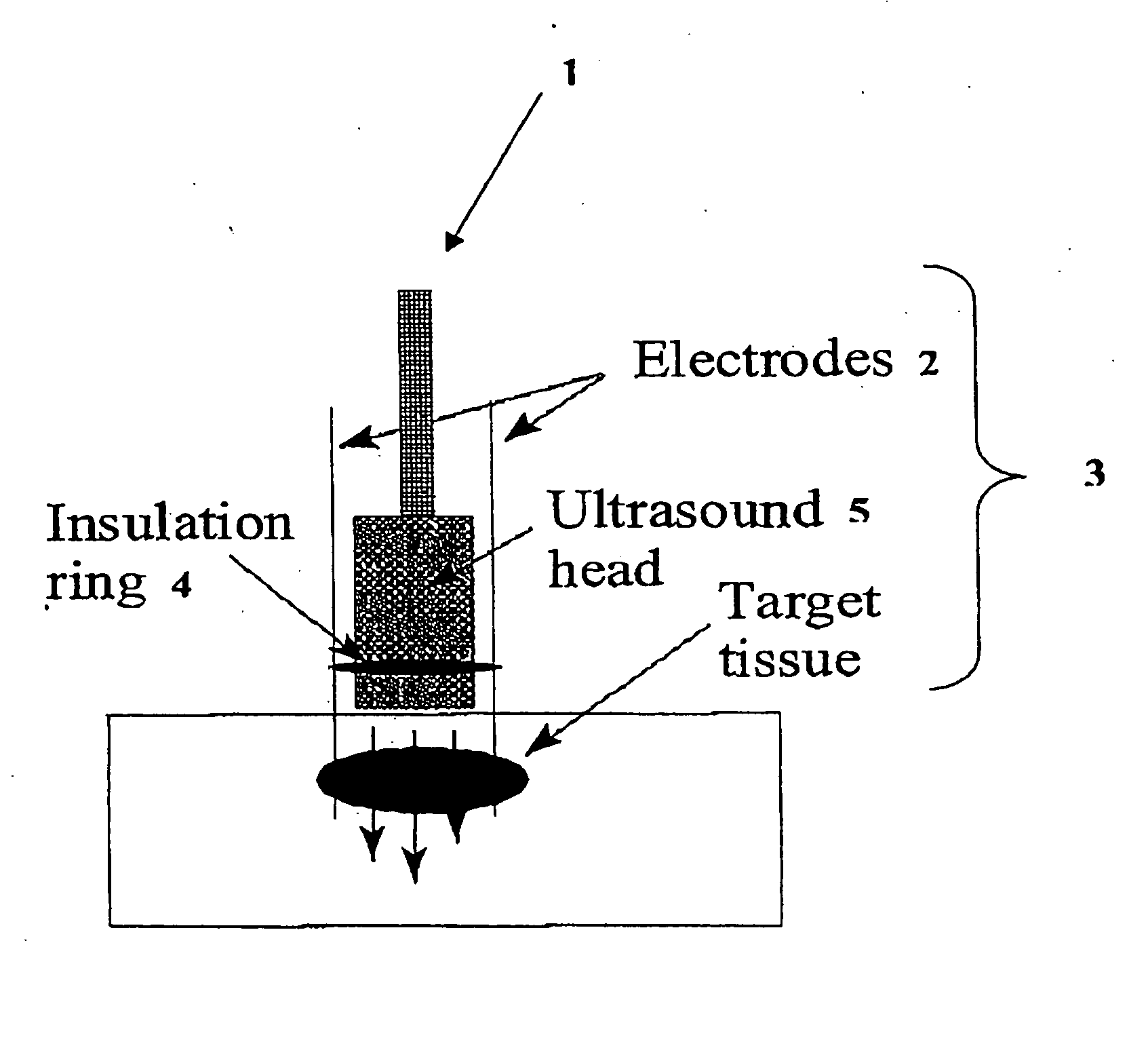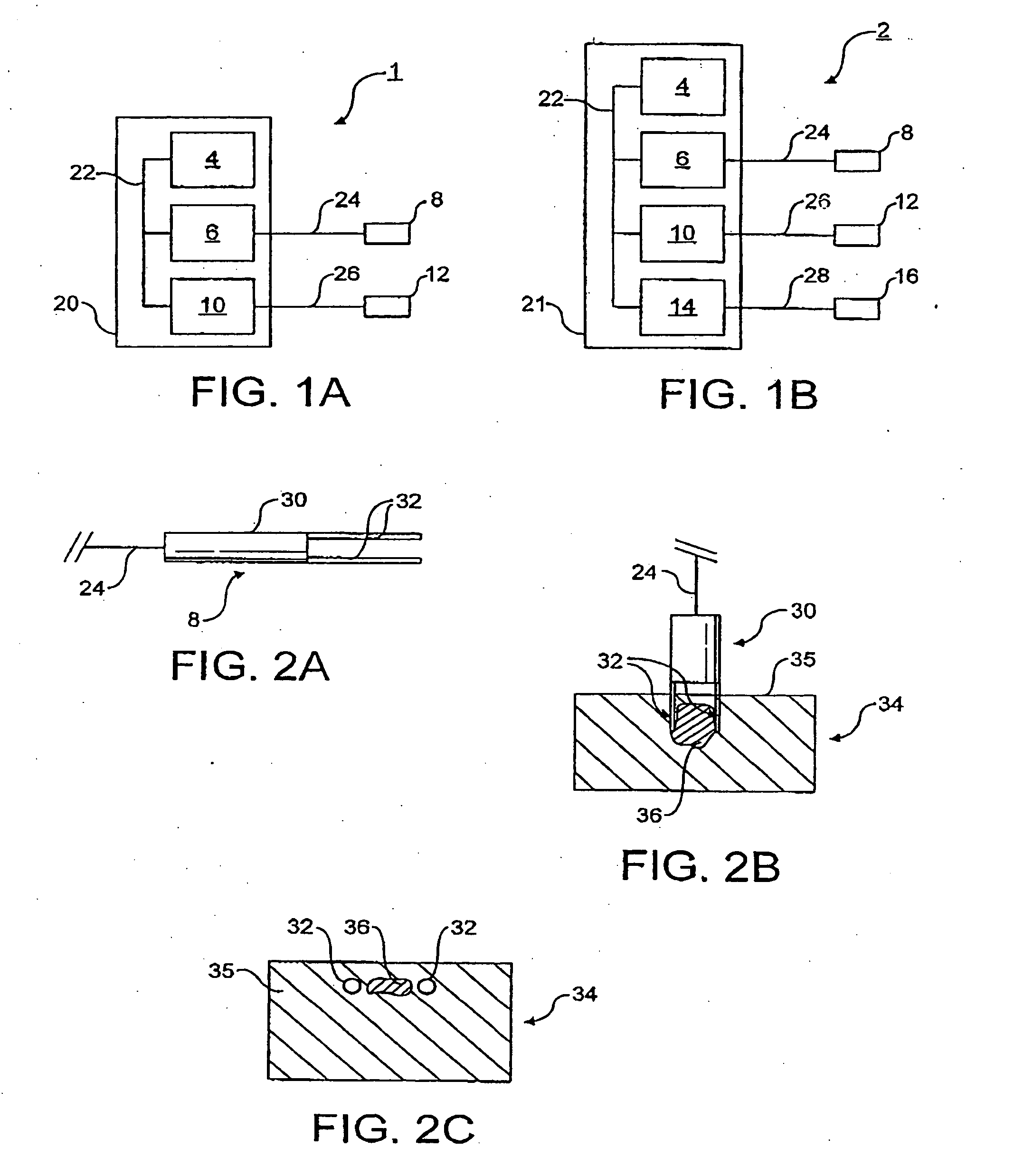Device II
a technology of a device and a body is applied in the field of devices to achieve the effect of removing unwanted tissues in the body
- Summary
- Abstract
- Description
- Claims
- Application Information
AI Technical Summary
Benefits of technology
Problems solved by technology
Method used
Image
Examples
example 1
The Effect of Low Intensity Ultrasound on Cells Treated with Pulses of 3.625 kV / cm
[0313] The target cell line employed in these studies is a mouse friend leukaemic lymphoblast cell line (clone 707, ECACC no. 91112126 from the European Collection of Animal Cell Cultures) and is maintained in DMEM supplemented with 10% (v / v) foetal bovine serum. Cultures are maintained in a humidified 5% CO2 atmosphere at 37° C. Cells are harvested by centrifugation, washed once in phosphate buffered saline (PBS) and suspended at a concentration of 1.065×107 cells / ml. 0.7 ml aliquots of this suspension are dispensed into electroporation cuvettes (0.4 cm electrode gap) together with 0.1 ml of PBS. Cuvettes are retained on ice and electroporated by delivering two pulses of 3.625 kV / cm at a capacitance of 1 μF. Cells are washed twice in PBS by centrifugation, resuspended in PBS containing MgCl2 (4 mM) (PBS / Mg) and retained at room temperature for 30 min. Cells are washed twice in PBS / Mg containing 10 mM...
example 2
The Effect of Low Intensity Ultrasound on Cells Exposed to Pulses of 1.875 and 2.5 kV / cm
[0315] In order to determine whether or not the pulse electric field strength had any effect on susceptibility of the treated cells to low intensity ultrasound, 0.7 ml aliquots of cells (0.8×107 cells / mil in PBS / Mg) are dispensed into electroporation cuvettes (0.4 cm electrode gap) together with 0.1 ml of PBS. Cuvettes are retained at room temperature and electroporated as described for Example 1 except that one population is treated with two pulses at 1.875 kV / cm and another is treated with two pulses at 2.5 kV / cm. Cells are transferred to PBS / Mg / glucose and retained at room temperature for 15 min. Samples are treated with ultrasound for 30 sec. and allowed to stand at room temperature for 1 hour prior to determination of cell viability using trypan blue. A control population of cells is taken through the above treatment except that the electroporation event is omitted.
[0316] The effect of low...
example 3
Sensitisation and Ultrasound Treatment of Cells Immobilised in Alginate Matrices
[0317] In order to determine whether or not this sensitisation phenomenon could be achieved in a mass of cells, thereby mimicking a tumour mass, it was decided to embed the cells in an alginate matrix, expose the mass to electric pulses and subsequently expose it to ultrasound. Viability could then be determined using a modification of the MTT assay described previously (Rollan et al., Bioprocess Eng. 15, 47, 1996). To the above end 707 cells are harvested and suspended in 1% (w / v) sodium alginate (Keltone LV, Lot no. 35245A, Kelco, UK) at a concentration of 1.16×107 cells / ml. This suspension is added drop-wise to a calcium chloride solution (1.5% [w / v]) and beads (average vol. per bead=10 μl) retained in CaCl2 for 15 min. Beads are subsequently rinsed in PBS and dispensed into electroporation cuvettes (30 beads / cuvette) together with 0.5 ml PBS. Two electric pulses of 2.5 kV / cm at a capacitance of 1 pF...
PUM
 Login to View More
Login to View More Abstract
Description
Claims
Application Information
 Login to View More
Login to View More - R&D
- Intellectual Property
- Life Sciences
- Materials
- Tech Scout
- Unparalleled Data Quality
- Higher Quality Content
- 60% Fewer Hallucinations
Browse by: Latest US Patents, China's latest patents, Technical Efficacy Thesaurus, Application Domain, Technology Topic, Popular Technical Reports.
© 2025 PatSnap. All rights reserved.Legal|Privacy policy|Modern Slavery Act Transparency Statement|Sitemap|About US| Contact US: help@patsnap.com



